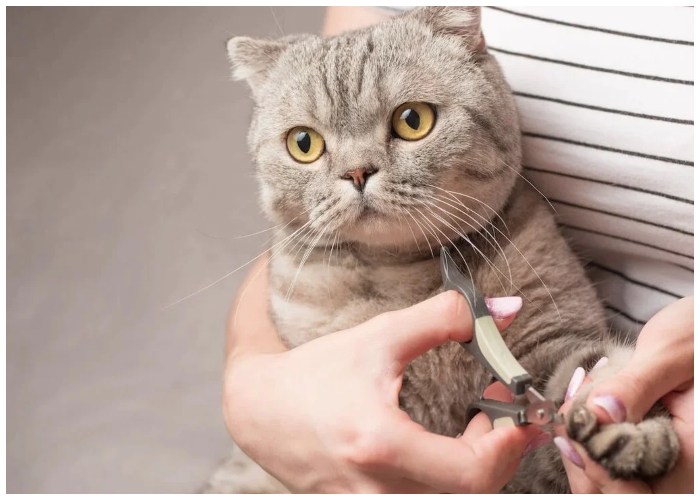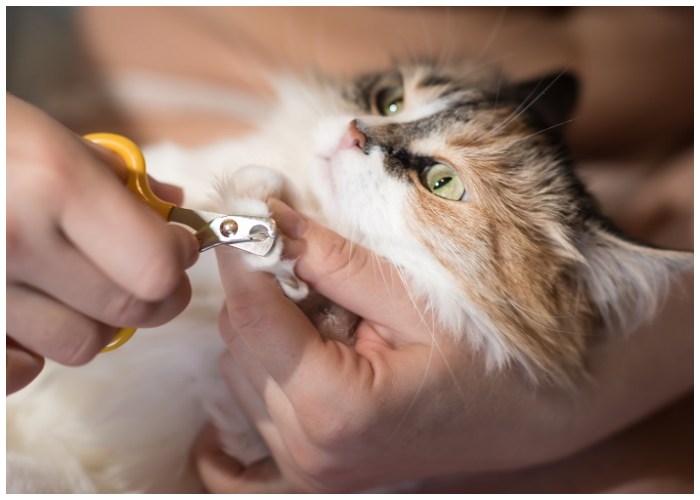Trimming your cat’s nails might seem daunting, especially if you’re worried about causing discomfort to your beloved feline. However, with the right approach and tools, this necessary grooming task can be stress-free for both you and your cat. Here’s everything you need to know to ensure your cat’s claws are kept in perfect condition without the fuss.
Why Trimming Your Cat’s Nails Is Important
Regular nail trims are crucial, especially for indoor cats and older felines whose claws don’t naturally wear down. Untrimmed nails can grow too long and curl back into a cat’s paw pads, leading to pain, infection, or injury. Additionally, long nails can get caught in carpets, furniture, or other fabrics, which can lead to further discomfort or injury.
Active cats and kittens that frequently roam outdoors may naturally wear down their claws, reducing the need for frequent trims. Nevertheless, providing a scratch post in your home is essential for all cats to naturally file their nails and satisfy their scratching instincts.

Determining If Your Cat’s Nails Need Trimming
Keep an eye out for signs that your cat’s nails are too long:
- Frequent snagging on carpets, blankets, or upholstery.
- Visible discomfort while walking or reluctance to scratch their post.
- Tapping sounds when walking on hard surfaces.
- Visible claw curvature reaching toward or touching their paw pads.
If you notice any of these signs, it’s likely time for a trim.
How to Trim Cat Nails: A Step-by-Step Guide
- Preparation: Ensure you have the proper tools. Cat nail scissors or a specialized nail trimmer are recommended, as human nail clippers can cause the nails to splinter or break. Have your cat’s favorite treats handy to make the experience positive, and consider wrapping your cat in a towel or having another person help if your cat tends to squirm.
- Create a Calm Environment: Choose a time when your cat is calm—avoid moments of high energy or excitement. Find a quiet, comfortable space to perform the trimming.
- Handling the Paws: Gently but securely hold your cat in your lap or on a stable surface. Softly press the top of the foot and the cushiony pad underneath to extend the claws. Get accustomed to handling your cat’s paws before attempting to trim to build their comfort level.
- Trimming the Nails: Identify the transparent tip of the nail, and cut only the white part, avoiding the pink “quick,” which contains blood vessels and nerves. Trimming into the quick can cause pain and bleeding. If you’re unsure, it’s safer to cut less of the nail rather than risk cutting this sensitive area.
- Reward and Relax: After each paw, offer a treat to associate nail trimming with positive outcomes. If your cat shows signs of stress, pause and continue later.

Dealing with Accidents
If you accidentally cut the quick and cause bleeding, apply gentle pressure to the tip of the nail using a sterile gauze pad or a clean cloth for a few minutes. If bleeding continues or your cat appears in pain, contact your veterinarian for further guidance.
Regular Maintenance and Monitoring
With regular practice, nail trimming can become a quick and stress-free activity. Monitor your cat’s nails and aim to trim them every 4-6 weeks, adjusting based on how quickly your cat’s nails grow and their lifestyle. While trimming your cat’s nails can initially seem challenging, following these steps will help you master the process, ensuring your cat remains comfortable and healthy. Remember, patience and gentle handling are key to making nail trimming a positive experience for your feline friend. For more cat care tips, check out our guides on cat grooming and daily care routines.